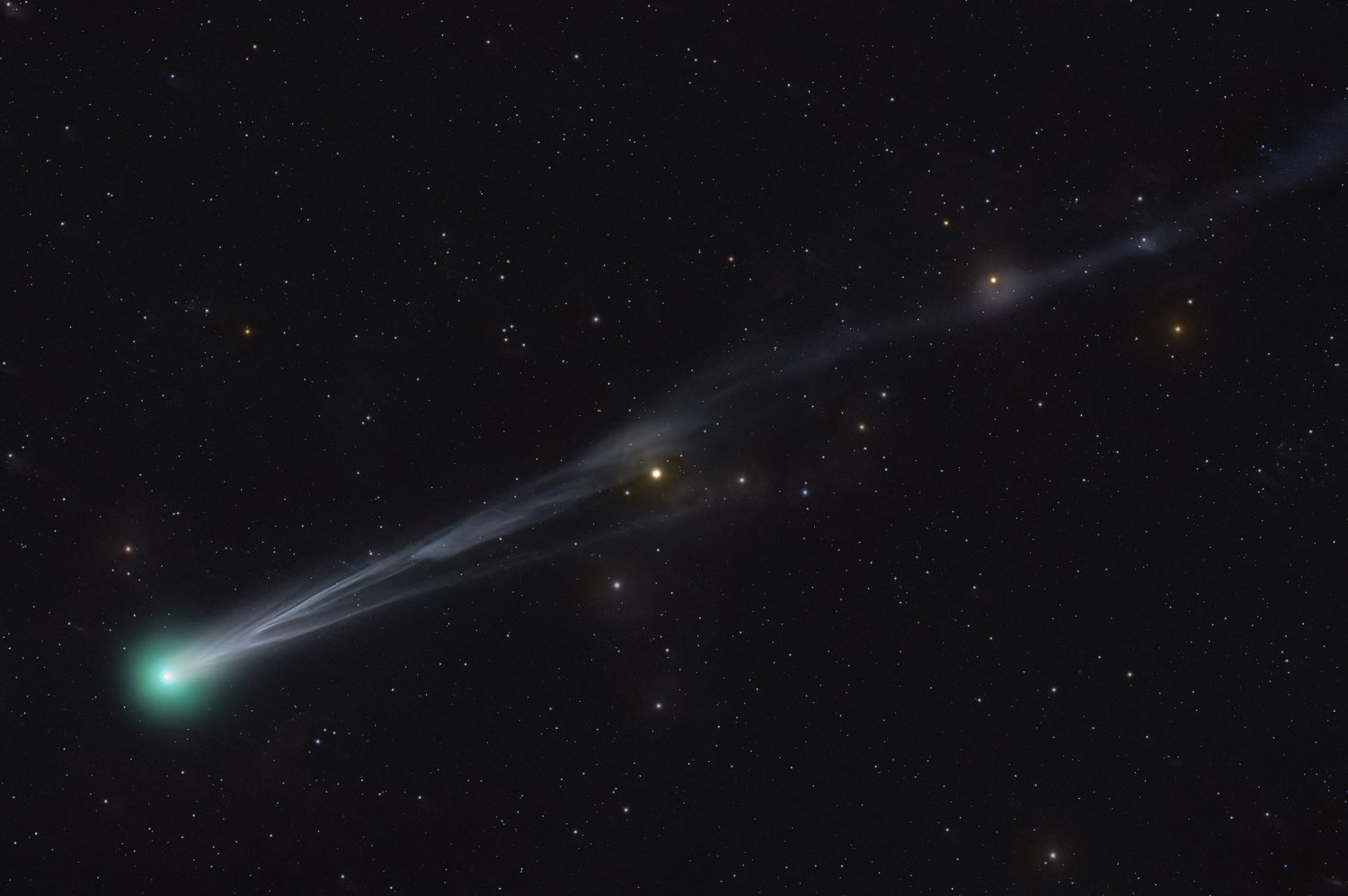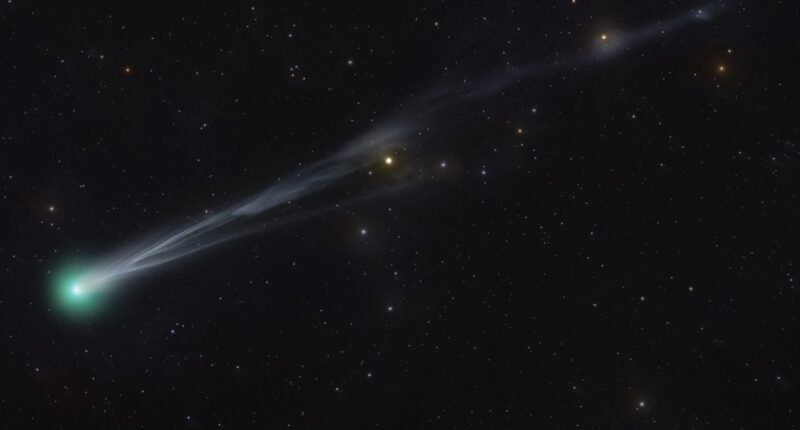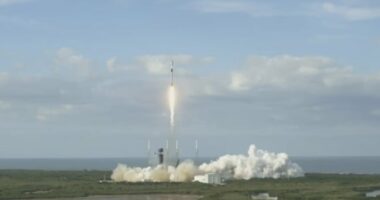Share this @internewscast.com

Two greenish-hued comets are swinging through the inner solar system this fall, offering a rare chance to spot them in the coming weeks.
The comets labeled C/2025 A6 (Lemmon) and C/2025 R2 (SWAN) are currently visible from the Northern Hemisphere as their orbits take them through our cosmic vicinity on their paths around the sun.
Two comet appearances in the same month are very uncommon.
Throughout October, both celestial bodies can be observed with binoculars or small telescopes. Comet Lemmon might be visible to the unaided eye when it reaches its nearest point to Earth, being at its brightest, around Oct. 21.
Already, some skywatchers have caught sight of these icy wanderers.
Astrophotographer Julien De Winter, a junior lecturer at the University of Mons in Belgium, captured Comet Lemmon in late September from Texas, showcasing its striking emerald sheen and lengthy tail.
The faint green color comes from the presence of carbon in the cloud of gas that surrounds the comet’s nucleus.
In the Northern Hemisphere, Comet Lemmon will be visible until midmonth near the Big Dipper before sunrise, as reported by EarthSky, a site focused on astronomy and skywatching. The optimal view is northeast, just before dawn, slightly below the star arrangement forming the Big Dipper’s recognizable bowl and handle.
In about a week, the comet will instead appear in the evening sky, ascending in the west. From that time through the month’s end, it might be possible to spot it without any equipment, although spotting these cosmic wonders can be challenging.
Comet SWAN remains visible in the evening sky throughout the month. The ideal time to view it is approximately 90 minutes after sunset, looking southwest. This comet likely won’t shine brightly enough for unassisted viewing, so binoculars or a small telescope will be essential.
In the coming days, Comet SWAN will appear higher and higher on the horizon after sunset and may get brighter before it reaches its closest point to Earth on or around Oct. 20.
Under ideal conditions — clear weather, dark skies and as little light pollution as possible — it may even be possible to see both comets on the same night around the end of the month.
Comet Lemmon was discovered in January by the Mount Lemmon Survey, which tracks near-Earth objects using telescopes located in the Santa Catalina Mountains in Arizona.
Comet SWAN’s discovery was even more recent: An amateur astronomer spotted it in early September when sifting through images from the SWAN instrument on NASA’s Solar & Heliospheric Observatory, which launched in 1995 on a mission to orbit and study the sun.
A different type of comet — one from outside our solar system — is also passing through the inner solar system this month. Comet 3I/ATLAS is only the third such interstellar visitor ever confirmed, and it was recently photographed by a spacecraft in orbit around Mars. The interstellar comet will make its closest approach to the sun on or around Oct. 30.











